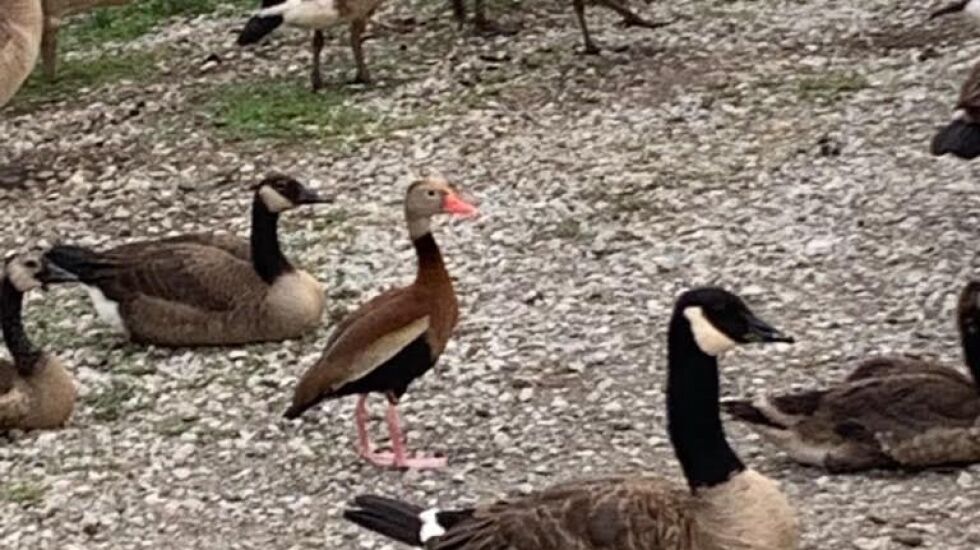
Dave Gajewski emailed a photo of a rare black-bellied whistling-duck that led me down a rabbit hole I loved.
The duck was mixed with Canada geese on the Indiana side of Wolf Lake by the Cargill plant. Cargill employee George Nieves took the photo on July 2.
First I checked with Alan Anderson, research committee chair for the Chicago Audubon Society, to make sure it was a black-bellied whistling-duck.
They’re quite the bird. The Cornell Lab of Ornithology delightfully describes them as “a boisterous duck with a brilliant pink bill and an unusual, long-legged silhouette. In places like Texas and Louisiana, watch for noisy flocks of these gaudy ducks dropping into fields to forage on seeds, or loafing on golf course ponds. Listen for them, too—these ducks really do have a whistle for their call.”
So why are they showing up here.
Ken Brock, who authored “Birds of the Indiana Dunes: Revised Edition” among other works and maintains an Indiana bird database, emailed, “On the broader perspective this species was formerly a tropical duck, it flourished in the lower Rio Grande Valley of south Texas. Apparently, global warming has allowed it to expand northward.
“Accordingly, the Black-bellied Whistling-Duck is now invading Indiana. The state’s first record occurred in 2002 (June 30) and the numbers are growing rapidly. Indeed, this duck is now breeding in Posey County [Indiana’s southwestern tip]: the first nesting occurred on 28 July 2018 and consisted of a female and nine downy chicks.”
Then he gave perspective for our area, “The first record for the Indiana lakefront occurred on 29 July 2011 in Forsythe Park. The second lakefront record flew past Miller Beach on 19 August 2016. The bird in your photo, the lakefront record, arrived on 2 July (thanks for the record) and spent the summer.”
Walter Marcisz, former president of the Chicago Ornithological Society and a top birder around Wolf Lake, messaged, “Very rare, but not unprecedented.”
He found that Rusty McIntire made the last eBird record of a black-bellied whistling-duck at Forsythe Park, Cargill channel, on Sept. 12.
Valerie Blaine in a November, 2021 article of the online magazine, OutdoorIllinois Journal, listed, “They have been spotted in Illinois and Wisconsin for the past 25 years. Over the past few years successful nests have been confirmed in southern Illinois and in 2020, a successful brood was confirmed in La Crosse, Wisconsin!”
“So if the numbers increase as expected this species may become common in a few years,” Brock summed up.
I’ve been the outdoors columnist for the Sun-Times for more than 25 years. I work with a day-to-day focus, rarely stepping back to see the big picture.
But this duck made me do that. Maybe, because it fits the pattern of remarkable change in our wild world I’ve witnessed in those 25-plus years.
When I started, the theory on reports of road-kill armadillos in Illinois was that they were pranks by college students returning from Missouri or Arkansas. Now armadillos inch north in Illinois enough that sightings should be reported at wildlifeillinois.org/sightings/report-armadillo-sightings/.
Black vultures, smaller than our turkey vultures, arrived and established in southern Illinois. Over the last 20 years, we’ve gone from the first confirmed sightings in modern times of cougars, black bears and gray wolves to keeping score on the sightings. The winter migration of Canada geese now largely short-stops around Chicago and the suburbs.
None of those are caused for solely one reason. Climate change plays a part, so does range expansion, natural dispersing of young males and habitat change.
Sometimes, it’s good to sit back and marvel.








